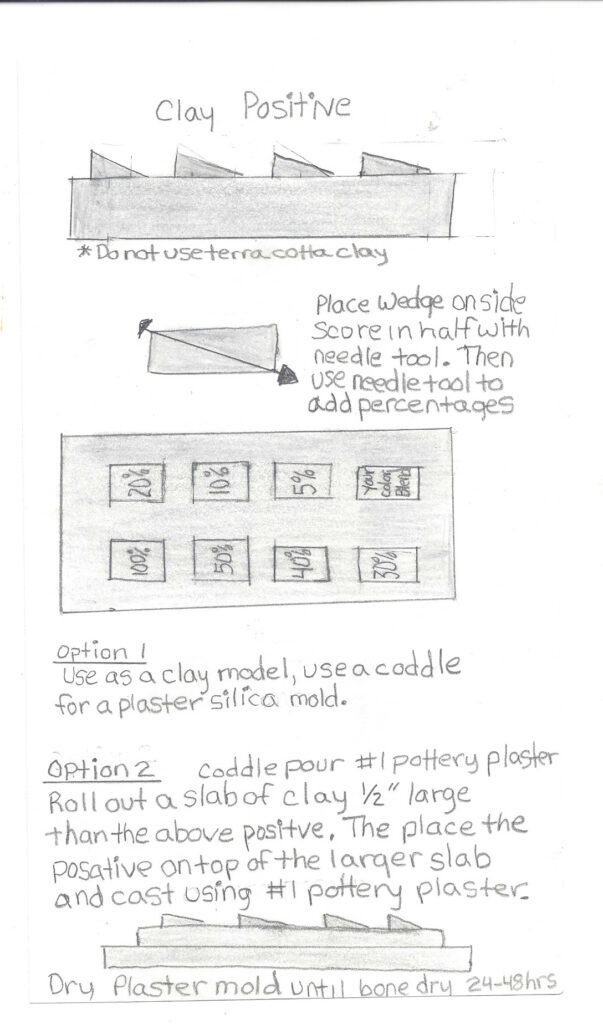
Pate de Verre Clay to Refractory Mold Part 1 Test Tiles


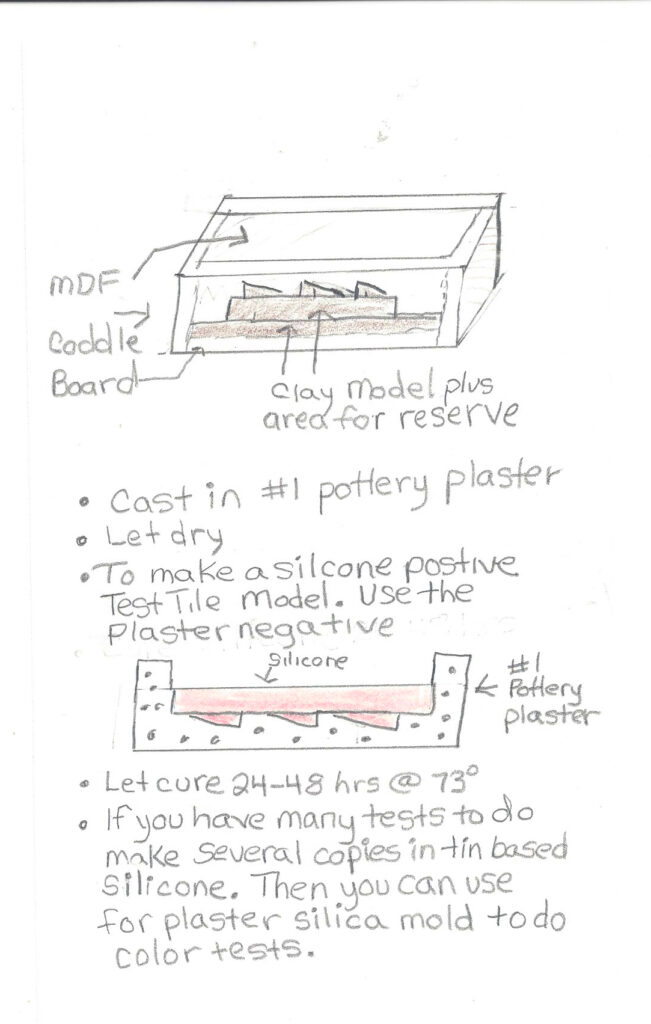
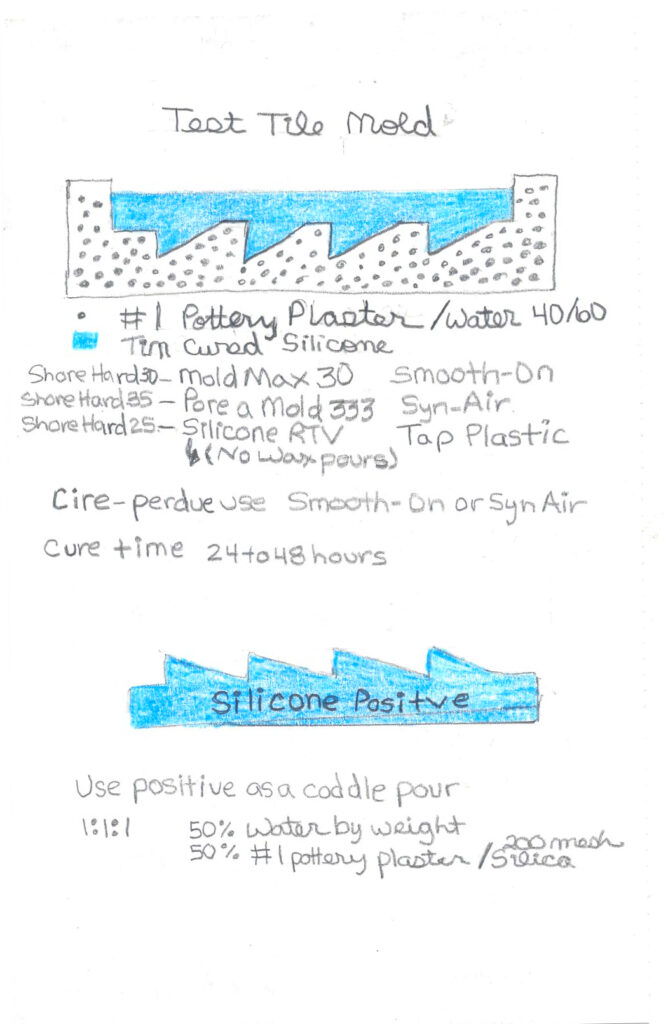
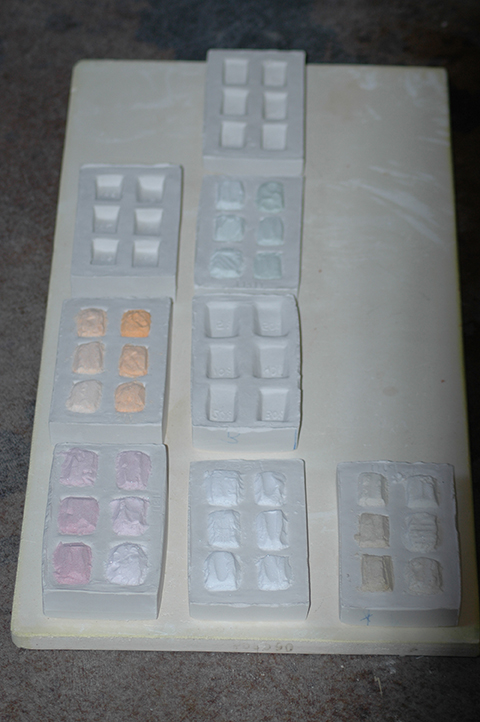
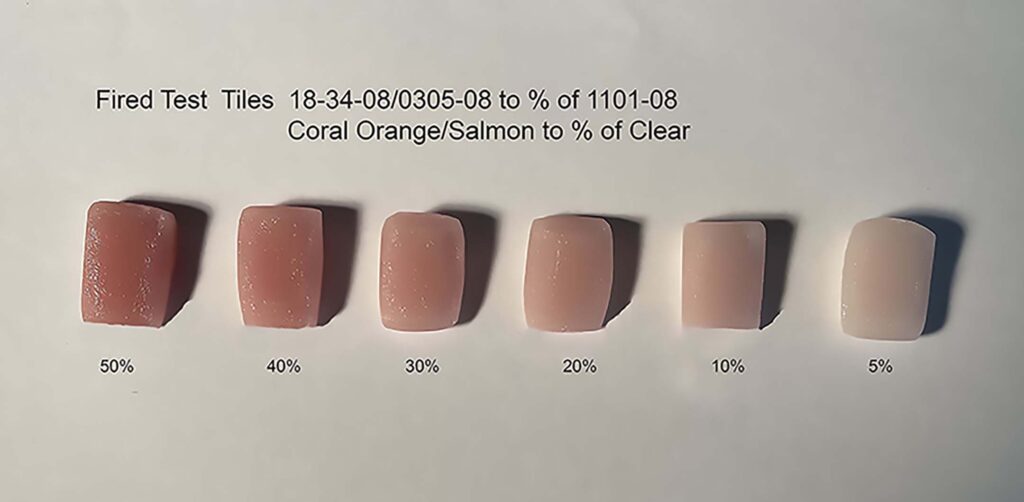
Colored powders were combined and mixed thoroughly in a lidded container with enough volume of color to use the base colored glass to a percentage of clear as shown above. Use a N95 respirator when using dry glass, especially powders. I tend to mix powders outside under cover as fine particles the eye cannot see remain in the air for 8 hours. Once the clear and colored mix is wet using a pate de verre glue. I have track lighting which is how I discovered the finest of particles in the air. Another reason to wet mop my area after doing art.
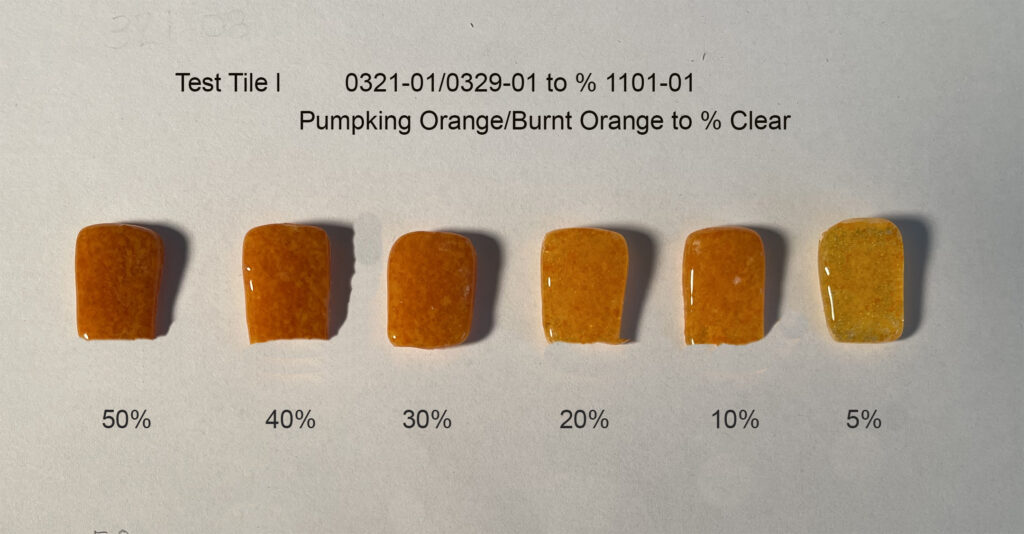
Colored frits were combined and mixed thoroughly in a lidded container with enough volume of color to use the base colored glasses to a percentage of clear as shown above. Use a N95 respirator when using dry glass, especially powders. Once the frit is wet using a pate de verre glue. I tend to mix dry frit and powders outside under cover as fine particles the eye can not see remain in the air for 8 hours. I have track lighting which is how I discovered the finest of particles in the air. Another reason to wet mop my area after doing art.